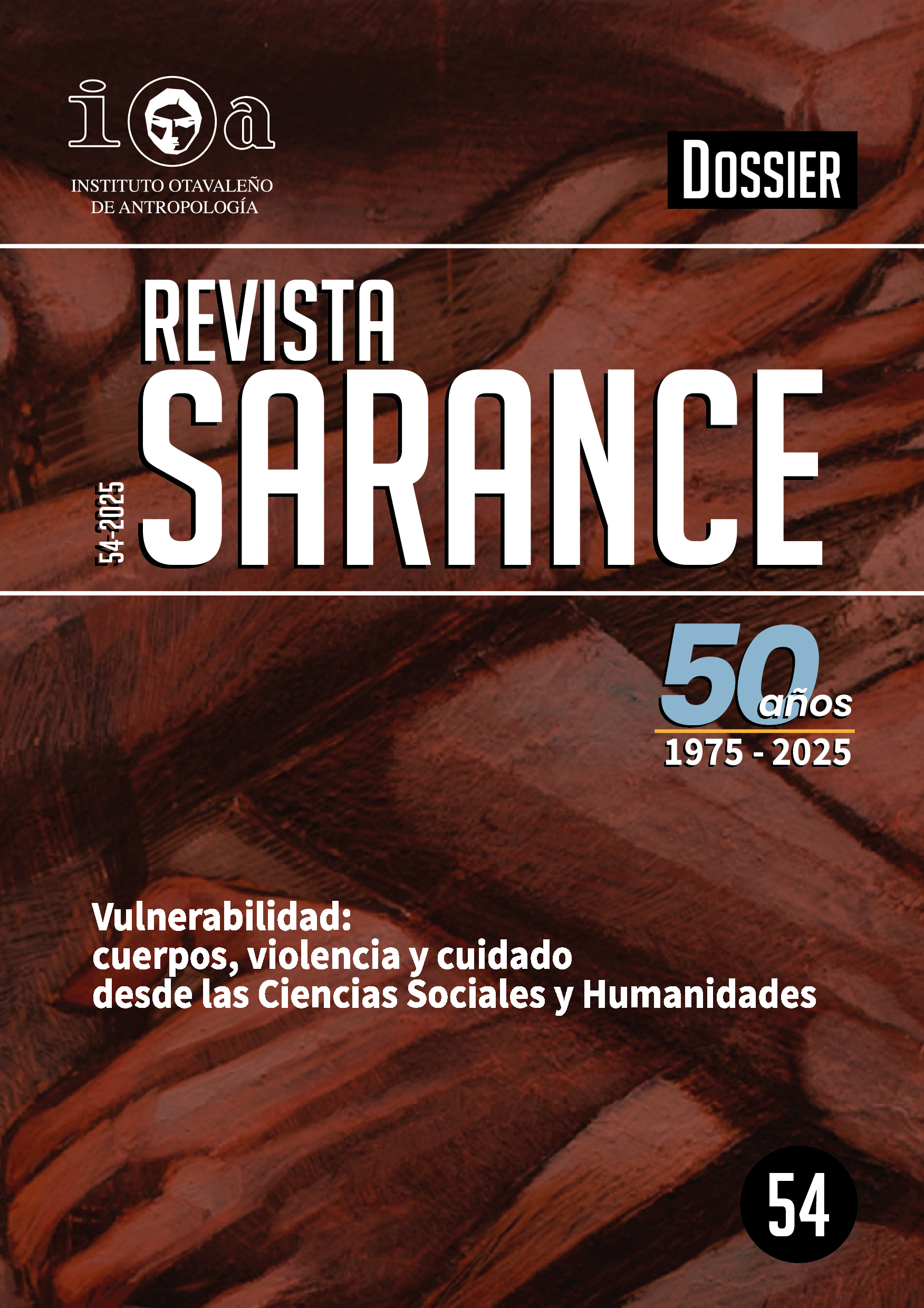
Publicado 2025-06-17
Palabras clave
- afectos,
- cuerpo,
- espacio público,
- género,
- running urbano
Derechos de autor 2025 Magdalena Moreno Ortíz

Esta obra está bajo una licencia internacional Creative Commons Atribución-NoComercial-CompartirIgual 4.0.
Cómo citar
Compartir
Resumen
Este artículo analiza las experiencias afectivas y corporales de personas corredoras urbanas, desde una perspectiva metodológica mixta, integrando un cuestionario digital (N=81), entrevistas semiestructuradas y una autoetnografía crítica. El objetivo fue explorar cómo se configuran las prácticas del running urbano en relación con el género, el miedo, el acoso y las dinámicas socioafectivas en ciudades del continente americano. Los resultados muestran una trayectoria consolidada: el 55 % de los participantes lleva más de cuatro años corriendo. Las motivaciones para entrenar varían según la edad: en el grupo de 26–35 años predomina la influencia de redes afectivas cercanas (75 %); entre los 36 y 55 años, el interés propio se posiciona como la principal motivación (más del 40 %). El análisis de las percepciones de miedo revela una profunda desigualdad: el 66.6 % de las mujeres reportó haber sentido miedo al correr, frente al 43.7 % de los hombres (X² = 13.25, p = 0.01). Además, un 35.4 % de las mujeres declaró haber sido víctima de acoso verbal, mientras que entre los hombres el reporte fue prácticamente nulo. También se identificaron diferencias significativas en las causas del miedo. Para los hombres, la opción más común fue “nada” (25 %), mientras que las mujeres señalaron “presencia de personas” (29.2 %) y “oscuridad” (20.8 %). En cuanto a las prácticas relacionales, las mujeres corren más en grupo, mientras que los hombres lo hacen con mayor frecuencia en solitario. La articulación entre los datos cuantitativos, los testimonios cualitativos y la experiencia encarnada de la investigadora revela cómo el cuerpo que corre se convierte en un dispositivo de disputa del espacio público. Correr, especialmente para las mujeres, es una práctica afectiva y política atravesada por tensiones, resistencias y formas cotidianas de agencia urbana.
Descargas
Referencias
- Ahmed, S. (2004). The cultural politics of emotion. Edinburgh University Press.
- Ahmed, S. (2010). The promise of happiness. Duke University Press.
- Bourdieu, P. (1997). Razones prácticas: Sobre la teoría de la acción. Anagrama.
- Bourdieu, P., & Wacquant, L. (1995). An invitation to reflexive sociology. University of Chicago Press
- Cardozo, S., & Torre, V. (2023). ¿El movimiento feminista crea espacio urbano y nuevas maneras de (re)generar la ciudad? Un acercamiento al caso de Montevideo, Uruguay. Geograficando, 19(2). https: //doi.org/10.24215/2346898Xe139
- Lara, L. A., & Enciso, E. A. (2013). The affective turn. Journal of Cultural Studies, 25(2), 125–138.
- Lynch, K. (2015). La imagen de la ciudad. Gustavo Gili.
- Mauss, M. (1971). Sociología y antropología. Tecnos.
- Paterson, M. (2009). Haptic geographies: Ethnography, haptic knowledges and sensuous dispositions. Progress in Human Geography, 33(6), 766–788.
- Segato, R. (2016). La guerra contra las mujeres. Traficantes de Sueños.
- Segato, R. (2017, abril 5). Instituciones y vulnerabilidad: Pensar la política en clave femenina. QuinceUCR. Universidad de Costa Rica. https: //www.youtube.com/watch?v=lCdXyrdeWvY
- Soja, E. (2008). Postmetrópolis: Estudios críticos sobre las ciudades y las regiones. Traficantes de Sueños.
- Solano, M. (2020). Relatos sobre el surgimiento del giro afectivo y el nuevo materialismo: ¿Está agotado el giro lingüístico? Revista de Estudios Sociales,72(2), 56–73

